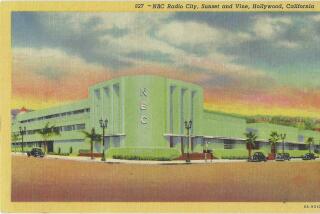THE DAY LIVE TV NEWS COVERAGE WAS BORN
A former wife of KTLA founder Klaus Landsberg, who directed the coverage of the 27 1/2-hour attempt to rescue 3-year-old Kathy Fiscus in 1949, recalls the historic broadcast of that tragedy.
They called it television’s “baptism of fire.”
The event that would prove television’s power to communicate, that held its audience in the grip of the first major news coverage in the medium’s history, focused on tiny Kathy Fiscus of San Marino, a blond 3-year-old who, on a footrace with playmates, fell into a 110-foot abandoned well shaft only 14 inches in diameter.
That unforgettable day was Friday, April 9, 1949. It was the day live television-news coverage was born.
Now, 38 years later, television viewers have been caught up in another rescue attempt, as workers inched their way toward 18-month-old Jessica McClure, trapped 22 feet down in an abandoned well in Midland, Tex.
The historic 27 1/2-hour telecast on KTLA Channel 5 of the Fiscus rescue attempt had such a profound impact on its viewers that those of us who watched the drama unfold still remember the almost unbearable agony it engendered in each of us as we prayed that little Kathy, wedged in her rusty cylindrical prison, 94 feet below, would be freed. But she died before anyone could get to her.
It is estimated that in 1949, there were only about 20,000 television sets in Los Angeles. Those of us who had them shared them with neighbors and even with total strangers who drifted into our homes to join in the vigil.
Former Los Angeles Times television critic Cecil Smith, then a young reporter covering the Fiscus story for this newspaper, often recalled driving along Wilshire Boulevard about 2 a.m.--on his way home to change clothes and get some rest--and observing at least 100 people crowded against the window of a music store that had a television set turned on to Channel 5’s live coverage.
“They were absolutely glued to that little black box, watching history unfold,” he would remark whenever the Fiscus story was discussed around the office in later years. “It was the first time I had been aware of the impact and news potential of the new medium.”
Indeed, with KTLA’s cameras rolling live a full 27 1/2 hours, the audience was totally involved in a real-life drama.
The events preceding the Fiscus telecast are somewhat unclear in my mind. What I can remember is a hurried dinner that first evening with constant phone interruptions after KTLA founder Klaus Landsberg, to whom I was married at the time, was informed of the accident.
The news of Kathy’s plight had already spread and Klaus was keeping close tabs on the rescue progress. Within an hour or two, he had made his decision to line up his remote crew and head for the rescue site to set up a complex hook-up system. Nothing like this had ever been done before.
Klaus picked his sportscaster and special events announcer, Bill Welsh, and a very young Stan Chambers to work in relays during the telecast. Eddie Resnick, Jim Cassin and Robin Clark were on camera. The enormous task of technically setting up the operation was the responsibility of Klaus and his engineers.
When KTLA’s two mobile units arrived, firemen had already been on the scene for several hours, lowering air hoses into the shaft. Newsmen and newsreel cameras were everywhere. Four cranes were brought in, and a well digger and four bulldozers were put into action. The area was lit by 50 searchlights powered by portable generators.
The files of Hollywood’s Central Casting were being searched for midgets who might be used to descend the pipe to reach the girl. A thin man from the Clyde Beatty Circus and Philip Morris’ call boy Johnny volunteered, but neither was small enough to enter the shaft.
During the long ordeal, I was asked to bring a fresh change of clothes to Klaus, who never left the site. When he finally returned home two days later, bearded and totally exhausted, I remember him saying, “This is tragic, but this is also television history.”
Chambers has remarked that this one news event sold more television sets than anything else. He also had high praise for Klaus, who died in 1956.
“Not only did Klaus direct that coverage, but he provided the narration. He saw so many human interest things happening through the eye of the camera. He’d describe them to us in our earphones, and we’d simply repeat him word for word,” Chambers once said.
Chambers also has written that the Fiscus coverage “was one of the most moving dramatic events ever televised. For the first time, viewers felt the overwhelming emotional impact of live television.”
Daily Variety called the Fiscus coverage “the greatest broadcast for the development, progress and advancement of television.”
To this day, it is remembered by all who saw it, and the rescue drama this week in Midland, Tex., brought it vividly to mind once again.
More to Read
Inside the business of entertainment
The Wide Shot brings you news, analysis and insights on everything from streaming wars to production — and what it all means for the future.
You may occasionally receive promotional content from the Los Angeles Times.










